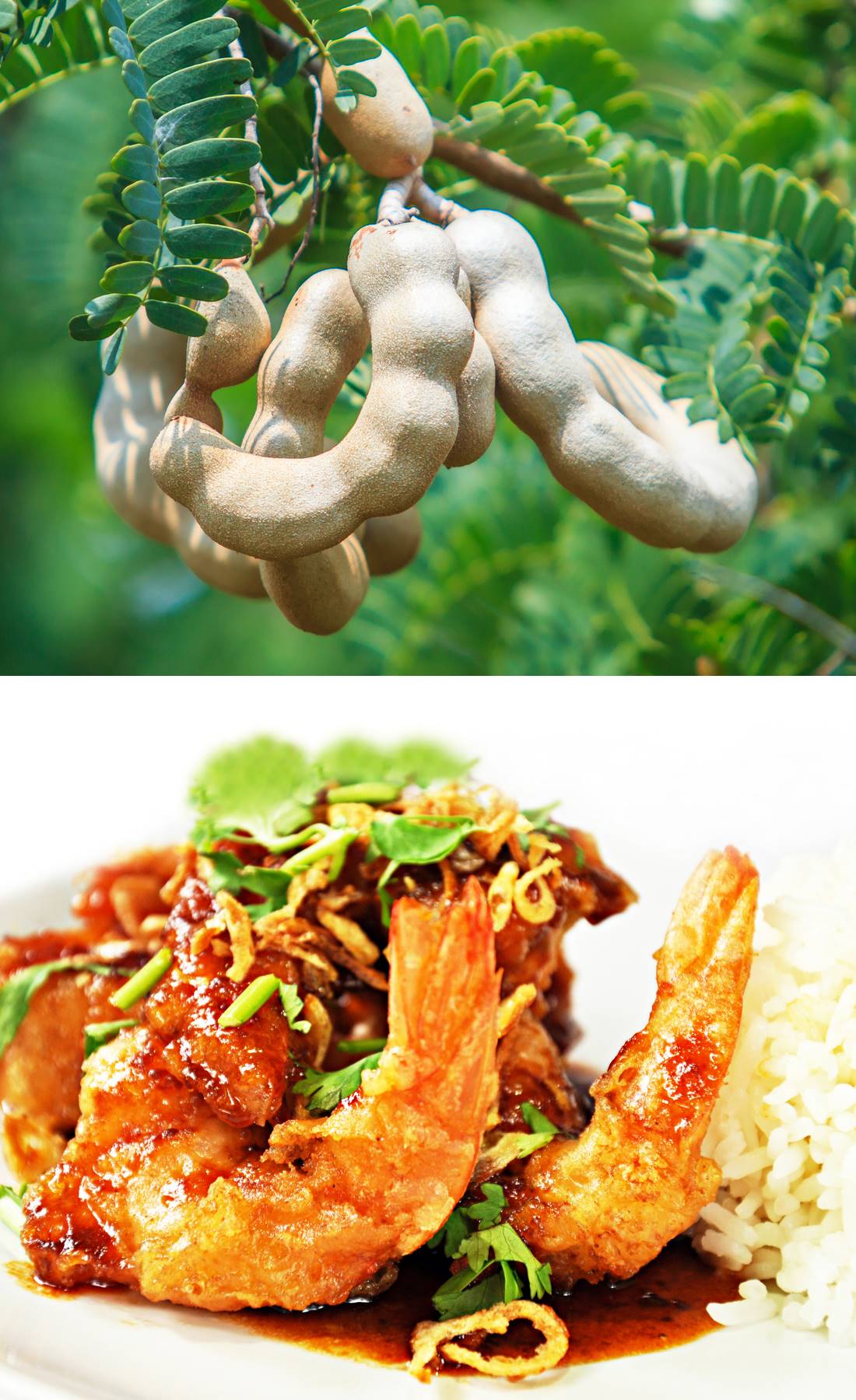Tamarind

To be honest, if a colleague or friend had asked you about tamarind today, would you have known what it is? A musical instrument? A famous actress? Can you eat it? Yes, you can eat it.
Tamarind is a legume. Tamar Hindi means Date of India, then you get a nice idea. The flesh of the tamarind is reminiscent of the flesh of dates. Most tamarinds come from India, although the legume was previously found in African countries. Nowadays it grows in many warm places, but especially in Asia.
If you want to eat tamarind, you have to be patient. The tree grows very slowly, but is very strong (and can grow up to 25 meters), tolerates a lot of sun and prolonged drought. Only after about five years the tree produces fruit. Then you're not there yet. The fruit is not very easy to eat.
You have to peel the tamarind. Oval, hard seeds are embedded in dark brown fibrous flesh. Only when you have removed the skin, the stringy fibres and the seeds can you taste the fruit. That's a bit of a hassle. The flesh and fibres are quite intertwined and are difficult to separate. Why are we actually telling you this, because you don't have to do all this yourself. We already did it for you and we put it in a bottle. A bottle full of the tamarind's flesh, ready to use.
Tamarind is enormously versatile. It goes in curry or chutney, but also comes in handy when making lemon cake. It produces sodas, candy and from the flesh you make good jam. In Indonesia it is used in fresh peanut sauce, in Thailand it sometimes serves as a substitute for coffee, but perhaps the best known application is the Worcester sauce. Tamarind tastes sweet and sour, but a bit more sour than sweet, so it is a good substitute for vinegar and lemon juice.
For centuries, tamarind has been used in traditional medicines. This is not surprising, because tamarind contains many healthy ingredients. If you eat 100 grams of the legume, you already have over a quarter of your recommended daily intake of B1, and also quite a bit of B3 (12%) and vitamin C (6%). It also contains a lot of potassium and phosphorus.
We like that, but we prefer to use tamarind for cooking. For example, to give stir fried vegetables an extra kick, to dip fried fish, to fry spare ribs, to make cucumber salad or in the pad thai. In Asia they think exactly the same. Although they also use tamarind pulp to polish brass, copper and bronze. We don't do that.


